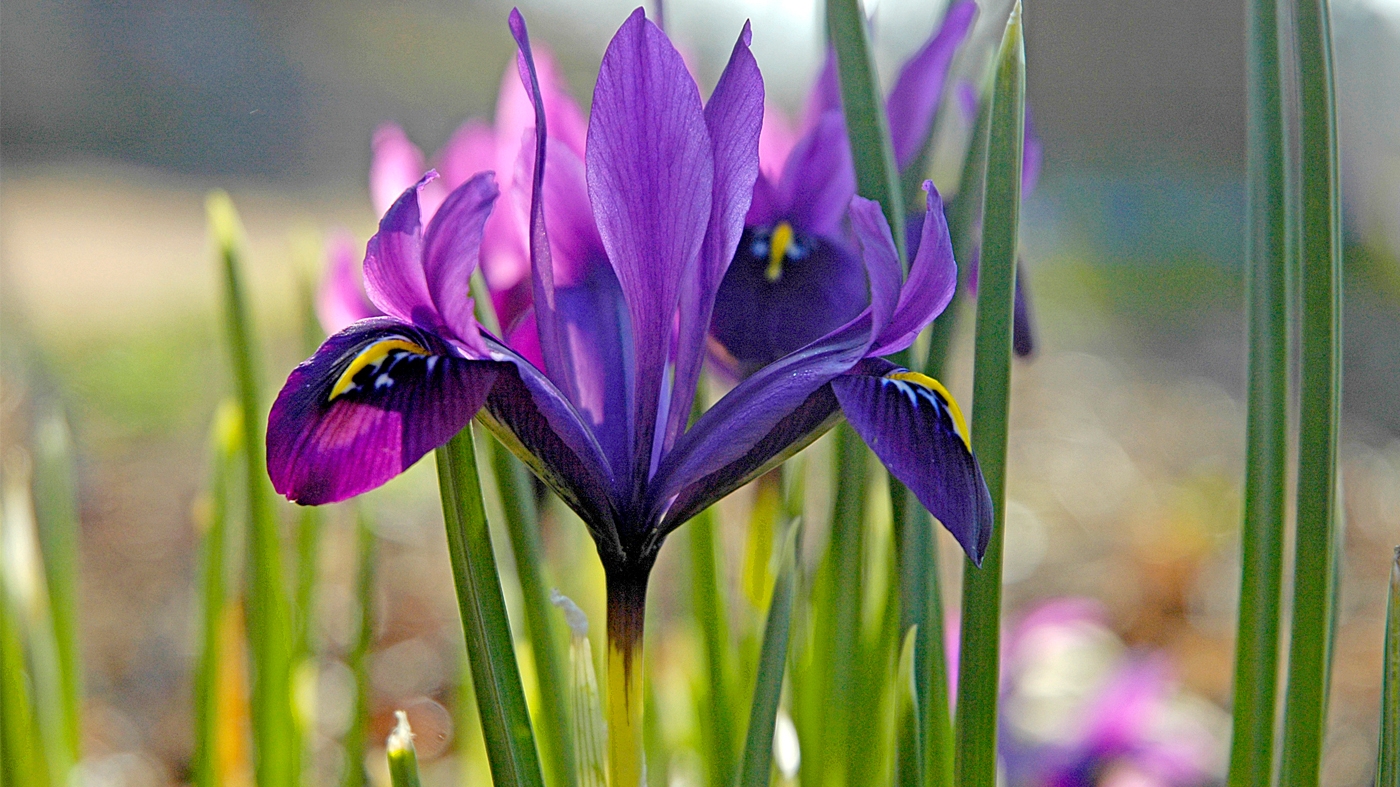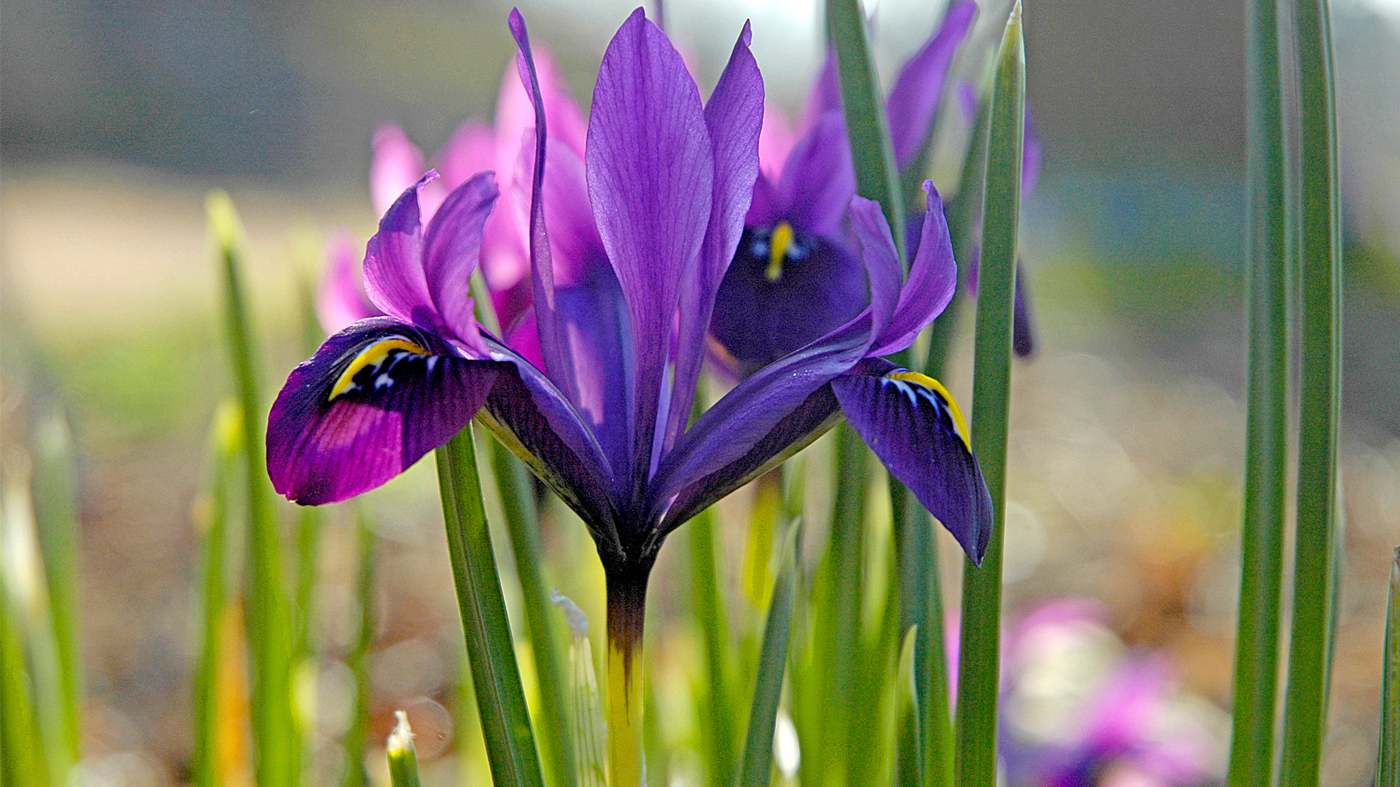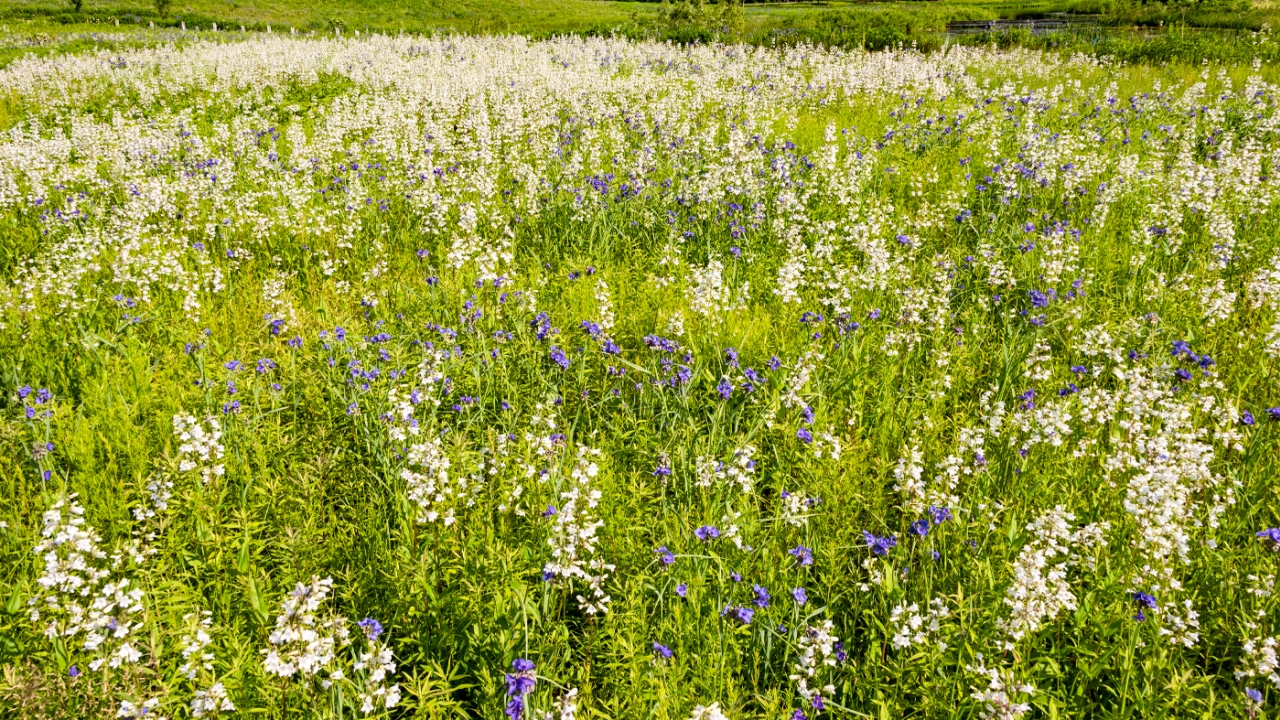

Meadow Makers
Meadow-making has become a captivating trend, often referred to as The New Naturalism, The New American Garden, The New Perennial Movement, Meadowscaping, and the Dutch Wave. All speak to mimicking the look and feel of the prairie, using great drifts of sun-loving perennials that change with the seasons. This style slowly bubbled up in the 1980s in Holland and Germany, and it has become a popular alternative to resource-gobbling lawns both in the U.S. and abroad.
Meadowscapes feature sweeping lines of grasses combined with perennials to create an abundance of color, texture, four-season interest, and—just as important—a place that supports bees, butterflies, birds, and other wildlife. In some ways, meadowscaping is like a dreamy, modernistic interpretation of a prairie on steroids. These designed landscapes are works of living art that mimic or take inspiration from nature. The hand of man (and woman) is evident. Unlike a cottage garden filled with “onesies,” a meadowscape includes great drifts of perennials and ornamental grasses that move with the wind.
The Chicago Botanic Garden embraced the “New American Garden” style in 2000, when Evening Island was designed by Oehme, van Sweden & Associates, of Washington, D.C. Opened in 2002, Evening Island boasts meadow gardens along with natural woodland areas, with more than 400 trees, 66,000 perennials, and nearly 7,000 shrubs.
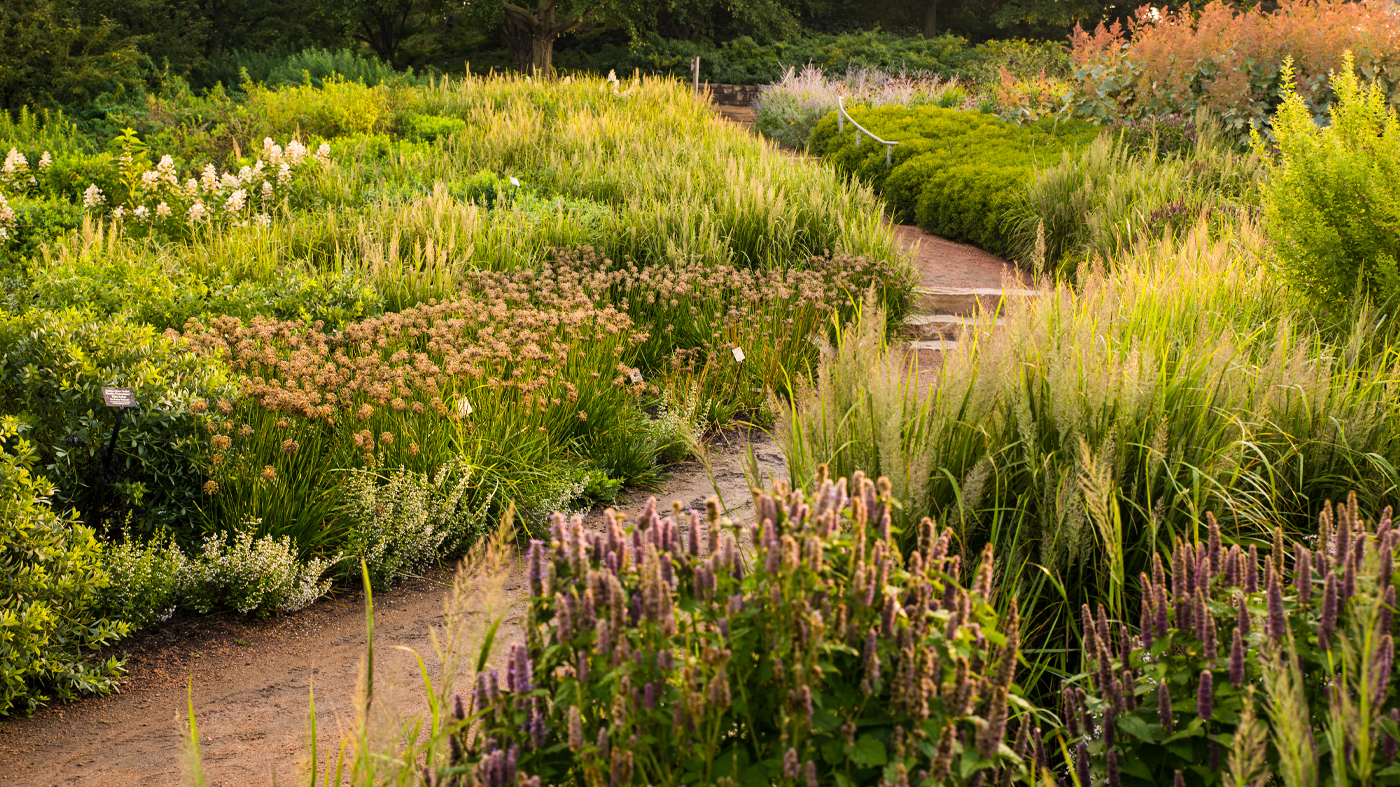
Prairie-Meadow Style
When my mother first moved from England to Chicago in the late 1950s, she’d never heard of a prairie. In England, a grassland is called a meadow. But every kid in our Chicago neighborhood called the empty, overgrown lots between stores and alongside the railroad tracks “the prairie” and that’s where we played.
When I visited my grandmother in England many years ago, delphiniums rubbed elbows with roses and large blue-flowered hydrangeas in her Essex garden. There were no ornamental grasses and only a small area of lawn. No coneflowers. No black-eyed Susans. No milkweed. That has changed. England and other European countries have embraced our Midwestern prairie plants and the prairie-meadow style. A good example is Wakehurst, in West Sussex, England, a botanic garden that features the American Prairie, a landscape installation that celebrates North America’s grasslands.
In the home garden, these mini-meadows serve pollinators, nectar-feeders, and a host of birds and other creatures. And they serve all of us, too. A meadow—no matter what size—is a place for relaxation, play, nature observation, stormwater capture, and much more. And meadowscaping can be used just about anywhere, from sprawling corporate campuses and public gardens, to a small section of an urban or suburban lot.
Emulating the Look
Midwestern prairies are host to wonderful wildflowers that create a colorful tapestry among the tall grasses. Native prairie plants like coneflowers, rudbeckia, milkweed, goldenrod, and many others provide showy blossoms and a source of nectar and pollen for butterflies, bees, and other insects. When they’re combined with native grasses, like little bluestem, switchgrass, and prairie dropseed, they offer a wonderful contrast in textures.
Consider downsizing part of your lawn that’s in full sun and replacing it with groupings of three, five, or seven of the same perennial placed in curving lines. Mound- or vase-shaped grasses like prairie dropseed create a visual contrast next to upright plants like Culver’s root (Veronicastrum), butterfly weed (Asclepias tuberosa), and ironweed (Vernonia). They’re all natives, but consider including pollinator-attracting non-native perennials like Allium ‘Millenium’ and Calamintha nepeta ‘Montrose White’ that bloom for several weeks throughout summer.
Prairie or Meadow?
The words “meadow” and “prairie” are often used interchangeably. Webster’s Dictionary defines “meadow” as land that is mostly covered with grass, especially a tract of moist low-lying, level grassland. It defines “prairie” as a large area of level or rolling land that usually has deep fertile soil, a cover of tall grasses, and few trees. Whatever you choose to call it, this natural garden style is not only trending and sustainable, it’s here to stay.
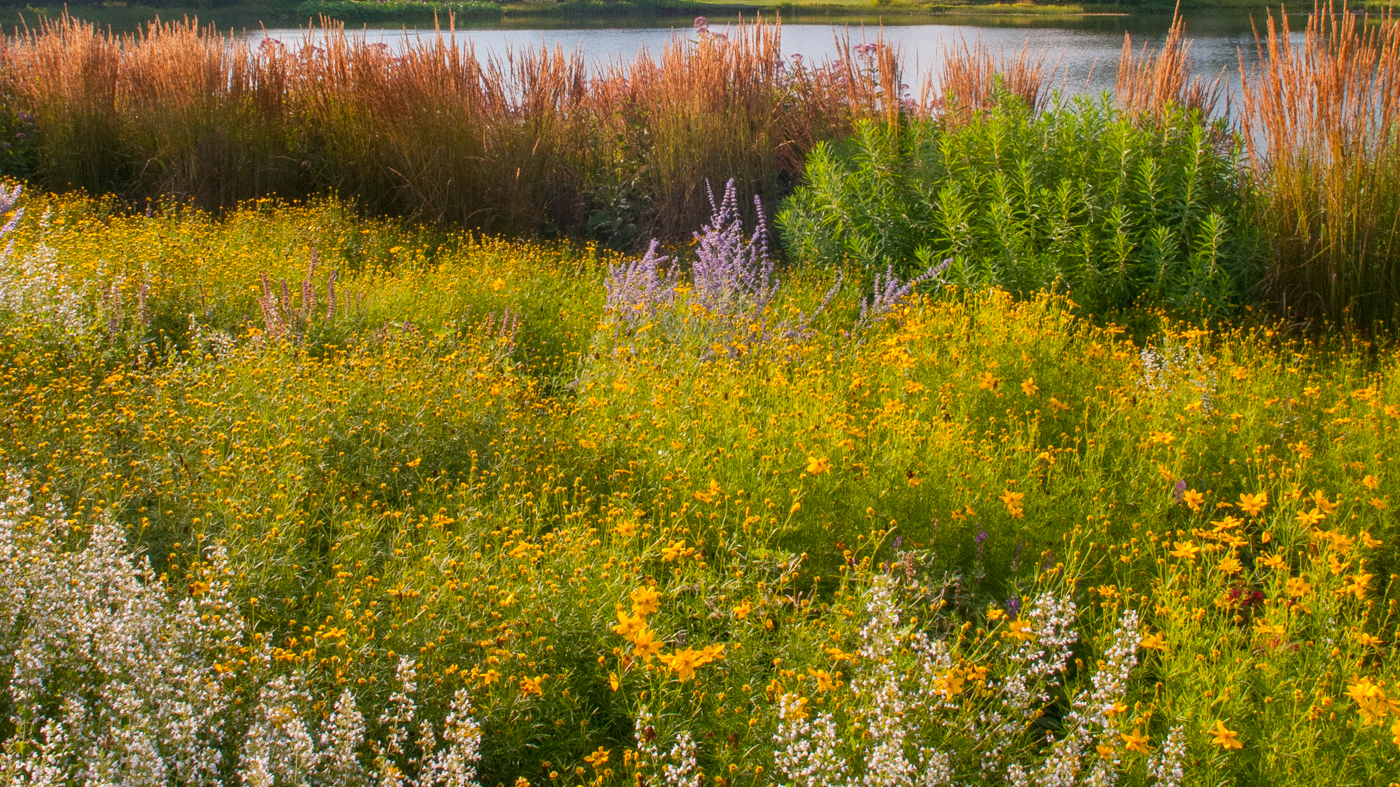
Visit
Immerse yourself in Evening Island, which sits between the formality of the English Walled Garden and the wildness of the Dixon Prairie.
Nina Koziol is a garden writer and horticulturist who lives and gardens in Palos Park, Illinois.
